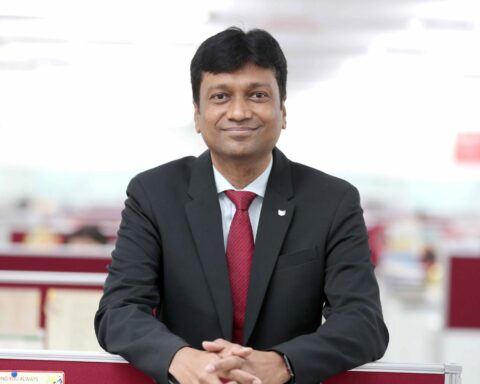Pradeep– As engineers, we are consistently under pressure to innovate quickly and deliver highly functional software. Integrated generative-AI assistants save time by providing insights drawn from the observability platform’s telemetry data via natural language prompts. This not only provides benefits in terms of saved time by streamlining troubleshooting, but it also democratises observability so engineers at any level of experience, as well as employees outside of the engineering organisation, can benefit from the power of the platform.
However, this level of insight can only be achieved with a unified observability platform. If data is living in siloed tools instead of an all-in-one platform, the assistant won’t have access to the whole picture to provide accurate suggestions and fixes, potentially leading to bugs and vulnerabilities emerging in the code. With a unified observability platform, businesses can eliminate these siloes. Furthermore, as the AI assistant learns with every issue, it can offer insights based on previous errors. It identifies issues quickly and proactively, dramatically improving the software development process by freeing up engineers from time-consuming troubleshooting so they can focus on building great products that improve the businesses’ growth.
Pradeep– All digital businesses have a common focus: driving growth and efficiency. They face pressing concerns around accelerating time-to-market, reducing churn, and maximising ROI on technology investments.
Observability platforms help businesses take on these challenges boldly. Integrated generative-AI assistants–such as New Relic Grok–democratise access to observability for engineers across different roles and even for employees outside of the engineering organisation, such as product managers. Generative-AI assistants that are integrated into an observability platform can sift through numerous data streams, generating actionable insights, and providing targeted guidance to engineers. This increases time-to-market, eliminates alert fatigue and enables engineers to focus on innovation; drastically improving growth.
Observability equips businesses to find issues and inefficiencies and address them head-on. Businesses can then optimise existing systems and scale rapidly to drive growth and success.
Pradeep– Engineers are central to helping any digital business function effectively. And they perform extremely challenging tasks every single day to keep the organisation’s digital assets up and running. Cloud adoption and the complexity of ever-evolving IT infrastructure require that engineers are equipped with observability to enhance their performance. Observability helps engineers untangle data, understand business performance, monitor service availability, and optimise processes. It offers real-time insights, empowering engineers to make data-driven decisions throughout the software development lifecycle which can translate directly into business value.
For example, one of India’s largest e-grocery platforms adopted an all-in-one observability platform to scale its business. With end-to-end visibility the company now has a big-picture view of performance bottlenecks, slow APIs and database queries, and analysis on cost-centers. Observability helped cut infrastructure costs by 35% and improve mean-time-to-recovery by 70-80%. As a result, the company has achieved 20% month-on-month growth.
Pradeep– End-to-end observability is critical for deployments that utilise Generative-AI because it helps to eliminate visibility restrictions caused by siloed data. If data is siloed across numerous point solutions, the assistant will only have access to selected pockets of data and won’t be able to provide accurate suggestions and analysis. An all-in-one observability platform, however, has access to all telemetry data, enabling it to effectively analyse telemetry data to identify issues, improve developer productivity and ultimately enable faster software delivery and better customer experiences.
Pradeep– Today’s digital systems and services have developers and the engineering community on their toes, tasked with the demands of delivering high quality software in ever-shortening time frames from a “Time to Market” perspective. Not only do engineers need to be responsible for the quality of their code, but given the heavy adoption of microservices architecture in software engineering, the quality of their work can also be impacted by the code of others in the team. This often results in a lot of regressive tasks and toil for engineers, equating to a loss in productivity. This raises the need for a tight collaboration between the teams, who as a united force need to look into the issues arising in the software development lifecycle process with a holistic view.
Generative-AI can help engineers save on time spent in detecting and resolving issues collaboratively, which oftentimes could be repetitive in nature, and thus reduce toil. As noted earlier, the Generative-AI assistant integrated with an observability platform can summarise telemetry data from code lines, associated logs, vulnerabilities and more, and provide a big picture view on what needs to be fixed by which team or engineer. Overall, this helps improve developer productivity, reduce toil, have a faster time to market and deliver high quality software.
Pradeep– AI has been a familiar term for me for a number of years now. My awareness of Generative-AI is as recent as a few months back when ChatGPT launched. When I first interacted with ChatGPT, it was truly an incredible experience– I could not believe what I was seeing. In my view, Generative-AI is possibly the biggest milestone in modern day IT, and one which has a deeper, contextual and transformational effect not only on IT systems and services, but also on human lives in general. Its ability to build meaningful content within seconds is groundbreaking and I can only imagine a manifold increase in the innovations it can help create in the days to come.
What are your thoughts on Generative-AI and its implications moving forward?
Pradeep– I think we can all agree that “Generative-AI” is no longer a buzzword. Moving forward, I expect its adoption to accelerate drastically across many industries and verticals. I can see industries like manufacturing, healthcare, banking/finance, automotive and aviation incorporating Generative-AI models, be it for improving vehicle efficiency, administering timely and specific treatment, better fraud detection in banking, and even simulations that optimise flight operations to ensure safety as well as cost efficiencies. These improvements would not be based on predictions via finite inputs as is the case with traditional AI, but rather on real-time, continuous learnings. The future possibilities and use cases for Generative-AI are incredibly exciting.






